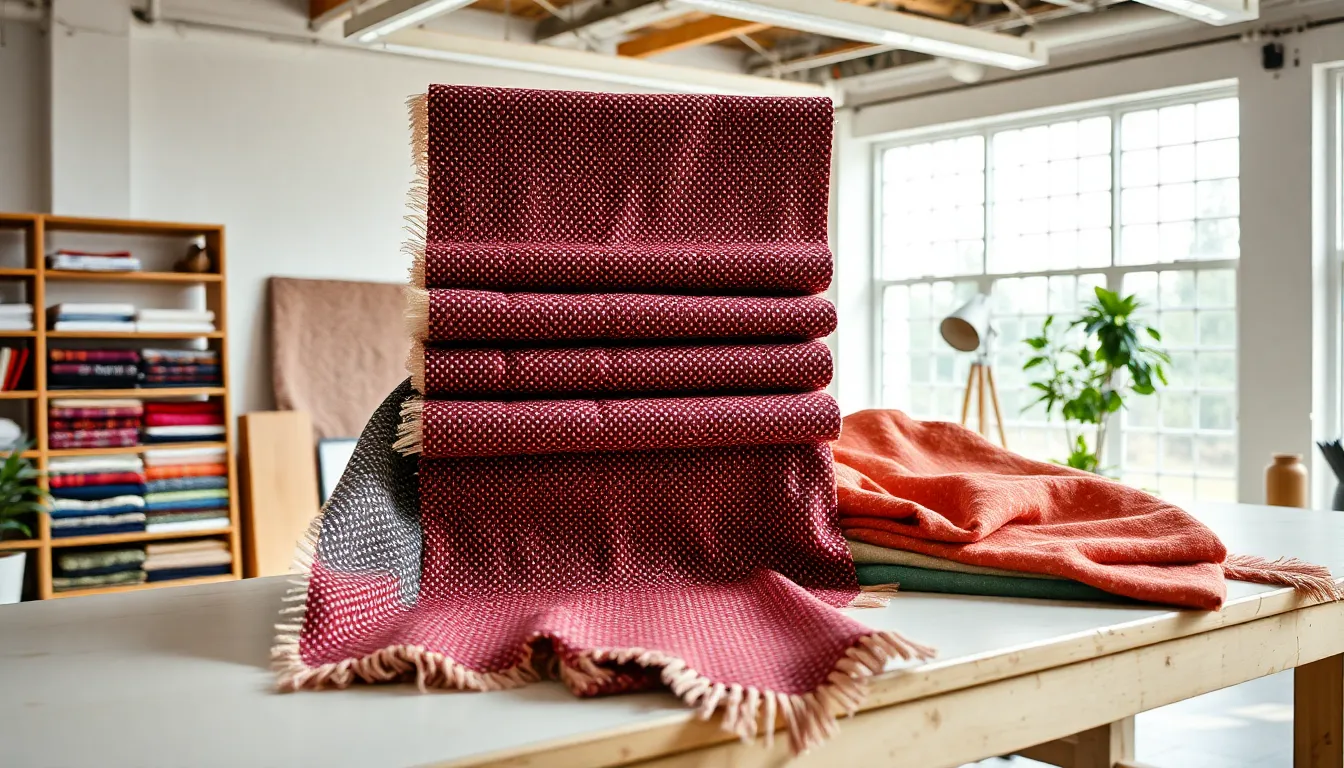Table of Contents
ToggleIn the ever-evolving world of fashion, trends come and go faster than you can say “wardrobe malfunction.” Enter the fashion swatch, the unsung hero of style that helps fashionistas and designers alike navigate this whirlwind of colors and textures. Think of it as the tiny, stylish cheat sheet for your closet—who wouldn’t want that?
Overview of Fashion Swatch
Fashion swatches serve as crucial tools in the design process, providing visual and tactile references. Designers rely on these samples to convey colors, fabric textures, and patterns. Swatches often appear in physical and digital formats, making them versatile for various applications.
Fashion enthusiasts utilize swatches to explore recent trends and develop a personal style. Industry professionals frequently create swatch books, collections that compile various samples for easy access and inspiration. Such collections allow for quick visualization of different combinations, streamlining the decision-making process.
Trends in fabric and color shift rapidly in the fashion world. It becomes essential for designers and retailers to stay updated with current trends represented in swatches. Using these samples enhances communication between designers, manufacturers, and clients, ensuring everyone stays informed about the aesthetic vision.
Swatches also play a vital role in presentations, where showcasing a collection can greatly influence buyer decisions. Smaller swatches allow for easy transport and demonstration at trade shows or client meetings. Designers often create mood boards incorporating these samples, providing a clear vision for their collections.
Fashion swatches improve design efficiency, reduce waste, and maintain focus on product quality. With the rapid pace of trends evolving, swatches enable a quicker response to market demands. Accessing accurate and stylish fabric and color representations assists in maintaining a competitive edge in a challenging industry.
History of Fashion Swatch

Fashion swatches have shaped the design and retail landscape for decades. Their evolution reflects changing trends and technological advancements in the fashion industry.
Origins and Development
Swatches emerged in the mid-20th century, responding to demands for visual material in fashion design. Designers sought convenient methods to present fabric options and color variations. Companies began producing swatches as small samples to facilitate selection and communication. The introduction of synthetic fabrics expanded design possibilities, leading to a greater need for organized fabric presentation. Throughout the late 20th century, advancements in printing technology allowed for more vibrant and varied swatch materials. Digital formats surfaced, broadening accessibility for designers and consumers alike.
Key Milestones
Key milestones define the evolution of fashion swatches. In the 1970s, the creation of the Pantone Matching System standardized color identification, revolutionizing how swatches are used and discussed. Throughout the 1980s, swatch books gained popularity among designers and retailers alike, providing compact color palettes for easy reference. The introduction of online swatch platforms in the late 1990s marked a significant shift toward digital integration. Today, swatches serve numerous purposes, from aiding in mood board creation to enhancing collaboration in design processes.
Benefits of Using Fashion Swatches
Fashion swatches offer numerous advantages that enhance the design process and streamline communication in the fashion industry. They serve as pivotal tools for effective collaboration and creativity.
Visual Communication
Visual communication benefits significantly from the use of fashion swatches. Swatches present clear examples of colors, textures, and patterns, allowing designers to convey ideas efficiently. Fabric swatches provide tactile experiences that enhance understanding, helping clients grasp the look and feel of materials. Mood boards incorporating these elements capture design concepts and inspire innovative thoughts. Designers can demonstrate their visions through these visual aids at meetings, ensuring everyone aligns on creative objectives. Immediate accessibility to various swatch selections simplifies decision-making. Clear communication fosters fruitful collaborations between teams, enhancing the overall design process.
Trend Analysis
Trend analysis becomes more effective when utilizing fashion swatches. Swatches allow for the assessment of current trends in colors and fabrics within the industry. By examining various samples, designers can identify emerging patterns and customer preferences, vital for staying competitive. Swatches also facilitate quick comparisons between different styles, making it easier to analyze shifts in consumer attitudes. Seasonal collections benefit from this analysis, as designers can adapt their offerings based on recent findings. Keeping up with trends ensures that designers create relevant and timely collections, making swatches essential tools for informed decision-making.
Types of Fashion Swatches
Fashion swatches come in various types, each serving distinct functionalities in the design and styling process.
Fabric Swatches
Fabric swatches showcase tangible samples that represent different textiles used in clothing, accessories, and home décor. Designers utilize these swatches to evaluate texture, weight, and drape characteristics, which are critical in developing a cohesive collection. Seamstresses and tailors reference fabric swatches when planning garment construction, ensuring compatibility with specific designs. Textiles may include cotton, silk, leather, and synthetic fabrics, each offering unique attributes. Designers often present these swatches in collections or swatch books, providing clients a tactile experience that enhances decision-making.
Color Swatches
Color swatches illustrate a broad spectrum of colors available for fabric and design elements. Designers rely on these swatches to select color palettes that evoke desired emotions and align with trend forecasts. Using tools like the Pantone Matching System, industry professionals can accurately match colors across different materials, improving consistency in production. Color swatches not only assist in visual communication but also inspire creativity in collections. Retailers benefit from color swatches by understanding consumer preferences, which guides inventory decisions and marketing strategies.
Fashion swatches are indispensable in the dynamic realm of fashion design and retail. They not only streamline the design process but also enhance communication between all parties involved. By providing tangible and visual references, swatches enable designers to convey their creative visions effectively.
As trends continue to evolve rapidly, the use of swatches ensures that designers remain agile and responsive to market demands. Their versatility in both physical and digital formats allows for seamless integration into various design processes. Ultimately, fashion swatches are more than just tools; they are vital components that drive innovation and creativity in the industry.



